Papers by Murat Saatcioglu
Earthquake Spectra, 2006
A reconnaissance was conducted in Indonesia to investigate the effects of the 26 December 2004 ea... more A reconnaissance was conducted in Indonesia to investigate the effects of the 26 December 2004 earthquake and tsunami on buildings, bridges, and other physical infrastructure. The infrastructure in the coastal regions of Banda Aceh was completely devastated by both tsunami wave pressures and seismic ground excitations. The damaging effects of the tsunami were most pronounced in unreinforced masonry walls, nonengineered reinforced concrete buildings, and low-rise timber-framed buildings. Engineered structures survived the tsunami pressure, but many suffered extensive damage due to seismic forces. The majority of the seismic damage was attributed to poor design and detailing of nonductile buildings. Specific observations made during the reconnaissance indicate the engineering significance of the disaster.

Unreinforced Masonry (URM) buildings are vulnerable to damage during strong earthquakes. Seismic ... more Unreinforced Masonry (URM) buildings are vulnerable to damage during strong earthquakes. Seismic assessment of URM buildings is essential for seismic loss estimation and implementation of seismic risk mitigation strategies. While there have been previous assessments of URM buildings in seismically active regions of the world, the assessment of buildings in Canada, with specific focus on the building inventory in Ottawa has been sparse. The existing Canadian practice is limited to rapid seismic screening of buildings, with occasional analysis of single structures. A detailed building inventory has been compiled for Ottawa recently by Sawada et al. (2014) who included data for over 50,000 buildings. This database was used in the current investigation to classify URM buildings into two different categories; low-rise and mid-rise buildings. The seismic vulnerability of representative buildings from each category was assessed by conducting non-linear time history analyses. The analyses w...
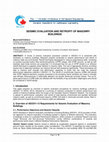
Dept. of Earthquake Engineering iit Roorkee, 2015
A review of seismic evaluation procedure outlined in ASCE41-13 is presented with emphasis on maso... more A review of seismic evaluation procedure outlined in ASCE41-13 is presented with emphasis on masonry buildings. Research projects conducted on seismic performance and retrofit of masonry walls are summarized. Retrofit techniques developed for masonry load bearing walls, consisting on surface-mounted carbon fibre reinforced polymer (CFRP) sheets, with CFRP anchors, as well as with stainless steel sheet anchors are presented. It is illustrated that the use of CFRP sheets is an effective retrofit technique to suppress shear distress in masonry walls. The use of appropriate anchors, providing tension ties to adjoining members can improve flexural wall resistance significantly. These techniques are able to improve both strength and deformation capacities to levels that can meet the required performance objectives outlined in ASCE41-13. The retrofit of unreinforced masonry (URM) infill panels with CFRP diagonal elements, properly anchored to the enclosing frame members can result in strength and stiffness enhancements in seismically deficient non-ductile reinforced concrete frames. The out-ofplane performance of URM walls are affected with the flexibility of top and bottom diaphragms and should be considered in retrofit design.
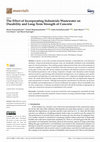
Materials, 2021
Concrete, as one of the essential construction materials, is responsible for a vast amount of emi... more Concrete, as one of the essential construction materials, is responsible for a vast amount of emissions. Using recycled materials and gray water can considerably contribute to the sustainability aspect of concrete production. Thus, finding a proper replacement for fresh water in the production of concrete is significant. The usage of industrial wastewater instead of water in concrete is considered in this paper. In this study, 450 concrete samples are produced with different amounts of wastewater. The mechanical parameters, such as slump, compressive strength, water absorption, tensile strength, electrical resistivity, rapid freezing, half-cell potential and appearance, are investigated, and a specific concentration and impurities of wastewater that cause a 10% compressive strength reduction were found. The results showed that the usage of industrial wastewater does not significantly change the main characteristics of concrete. Although increasing the concentration of wastewater can...

This research intends to assess seismic vulnerability of existing Canadian reinforced concrete sh... more This research intends to assess seismic vulnerability of existing Canadian reinforced concrete shear wall buildings. A probabilistic methodology is taken to account to quantify the likelihood of exceeding different damage sates under different levels of seismic hazard intensity through seismic fragility curves. The buildings considered are designed prior to the enactment of ductile design requirements in Canada. Considering 1975 as the benchmark for the introduction of modern seismic design provision, pre-1975 shear wall buildings with regular plan, were simulated in PERFORM 3D software for nonlinear modelling and analysis. The buildings were subjected to Incremental Dynamic Analysis by applying time history records compatible with Canadian seismicity with increasing intensity to cover the whole range of structural behaviour. Seismic fragility curves of the existing shear wall buildings designed in pre-seismic code era were derived considering immediate occupancy, life safety and co...

This paper describes results from a study on the seismic vulnerability of three reinforced concre... more This paper describes results from a study on the seismic vulnerability of three reinforced concrete frame buildings designed for Vancouver, Canada. The buildings included a 4-storey, a 10-storey, and a 16-storey building, that can be considered typical of low, intermediate, and high rise buildings respectively. The buildings were designed in accordance with the National Building Code of Canada. The seismic excitations used in the analyses were represented by a set of 80 ground motion records. The response parameter considered in this study is the maximum interstorey drift obtained from nonlinear dynamic analysis of the frames. The intensity of the seismic excitations is represented by the spectral acceleration at the fundamental structural period of the frames. The assessment of the seismic vulnerability is based on the consideration of the mean annual frequencies of exceeding selected drift levels, i.e., the drift hazard curves. The computation of the drift hazard curves was conduc...

Transverse reinforcement in circular columns provides shear strength against diagonal tension, in... more Transverse reinforcement in circular columns provides shear strength against diagonal tension, inelastic deformability through concrete confinement and clamping forces for improved performance of spliced longitudinal reinforcement. An alternative to conventional reinforcement is the use of steel-belted radial automobile tires for improved seismic resistance where applicable. Scrap tires are readily available as waste material; provide stay-in-place formwork during construction, adequate transverse reinforcement for improved seismic performance and corrosion protection for longitudinal column reinforcement. When used for bridge and parking garage construction, they also provide resistance to potential vehicle impact. The use of tires as column transverse reinforcement has been under investigation at the University of Ottawa. A large number of columns were tested under simulated seismic loading to assess their performance. The tests demonstrated improved inelastic deformability, excee...

This paper presents results from a study on the relationship between the increase (i.e., the elon... more This paper presents results from a study on the relationship between the increase (i.e., the elongation) of the fundamental periods of reinforced concrete frame buildings designed according to the National Building Code of Canada and the intensity of seismic ground motions. For the purpose of this study, three buildings were designed including a 4-storey, a 10-storey, and a 16-storey building, that can be considered typical of low, intermediate, and high rise buildings respectively. The buildings were designed for the city of Vancouver, Canada, which is in a high seismic region. A set of 40 recorded accelerograms representative of seismic motions in the Vancouver region were selected for use in the seismic analysis. Each building was subjected to a series of seismic excitations producing responses that ranged from elastic to significant inelastic responses. The free vibrations of the buildings, after the end of each excitation motion, were analyzed to determine the postexcitation fu...

The performance-based assessment and design become more wide-spread in structural engineering pra... more The performance-based assessment and design become more wide-spread in structural engineering practice. The relationship between deformation limits and performance levels (immediate occupancy, life safety, and collapse prevention) are reasonably well established for steel-reinforced concrete (RC) walls. However, performance of RC walls reinforced with fiber-reinforced-polymer (FRP) bars can be substantially different. Four full-scale shear wall specimens were tested; two specimens were reinforced with glass-FRP (GFRP) bars, while the other two specimens were reinforced with steel bars. Analysis of the experimental observation defined the three performance levels and compared to the specified limits provided in the ASCE/SEI 41-06 in the drift ratio format. It was found that, the GFRP-RC shear walls developed significant deformability, exceeding the ASCE/SEI 41-06 deformation performance limits due to the elastic nature of the GFRP bars. This suggested proposing new deformation limits...
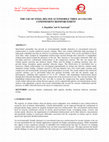
Steel-belted automobile tires provide an environmentally friendly alternative to conventional tra... more Steel-belted automobile tires provide an environmentally friendly alternative to conventional transverse reinforcement in circular reinforced concrete columns. These tires contain sufficiently high percentage of high-grade embedded steel that are effective in confining column concrete. Tires can be assembled on top of each other, either clamped by longitudinal reinforcement inserted through their sidewalls or longitudinal reinforcement placed around the perimeter of the rim. They function as stay-in-place formwork while also providing transverse confinement reinforcement to the compression concrete. The tires also protect the column against corrosion and chemical attacks. When used for bridges or parking structures, they also provide energy absorption against potential vehicular impact. The effectiveness of steel-belted tires as transverse column reinforcement was investigated experimentally by testing near full-size columns under simulated seismic loading. Columns encased in 550 mm...
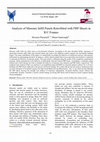
Journal of Structural Engineering and Geo-Techniques, 2017
Masonry infill walls are often used as non-structural elements. According to the past structural ... more Masonry infill walls are often used as non-structural elements. According to the past structural failure, ignorance of interaction between infill walls and enclosed frame may lead to the different seismic response for non-ductile building frames. The main contribution of this paper is to analytically investigate the behavior of reinforced concrete with masonry infill panels as participating structural. In doing so, a finite element model based on an equivalent strut method is conducted to represent the behavior of masonry panels. The strut model is calibrated using the results of the companion experimental program, which examined the cyclic behavior of infill panels with and without FRP sheets. Accordingly, a nonlinear spring element and a shell element are used to simulate the behavior of masonry strut elements and FRP sheets, respectively. The nonlinear static analysis (Push over analysis) is accomplished using SAP2000 [1] structural analysis software for a 10-story building with ...
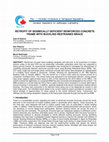
Reinforced concrete frame buildings designed and built prior to the enactment of modern seismic c... more Reinforced concrete frame buildings designed and built prior to the enactment of modern seismic codes of the post-1970 era are seismically vulnerable, particularly when they are subjected to strong ground motions. An experimental investigation was conducted to investigate the effectiveness of retrofitting seismically deficient reinforced concrete frame using Buckling Restrained Brace (BRB). Two, 2/3rd scale, single bay and single storey reinforced concrete test frames were designed as representative of a building frame located in Vancouver, Canada, following the requirements of the 1965 National Building Code of Canada (NBCC). The first served as a control frame while the second served as a companion retrofitted frame. The control frame was assessed to be seismically deficient, having seismic base shear capacity approximately equal to 34% of that required by the 2010 edition of the NBCC. The retrofit involved the application of a proposed BRB that was conceived and developed by the ...
Canadian Journal of Civil Engineering, 2021

Advances in Structural Engineering, 2019
In this research, different techniques of repair of deficient reinforced concrete columns are com... more In this research, different techniques of repair of deficient reinforced concrete columns are compared. These include carbon fiber–reinforced polymer sheets, steel jackets, and reinforced concrete jackets. The experimental investigation includes testing of 16 deficient columns of dimensions 150 × 150 × 800 mm subjected to concentric and eccentric loading up to failure. Two main variables are considered: the load eccentricity and the strengthening technique. The experimental results showed that the three strengthening techniques used in this research significantly improved the ultimate load carrying capacity in all cases of loading. Also, in the two cases of concentric loading and big eccentricity of 150 mm, carbon fiber–reinforced polymer wrapping achieved the highest ductility and absorbed energy capacity. In addition, strengthening with reinforced concrete jacket improved the initial stiffness and toughness. The cracking load, ultimate load, and ductility of the deficient columns ...
Nato Science Series: IV: Earth and Environmental Sciences
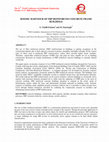
The use of fibre reinforced polymer (FRP) reinforcement in buildings is gaining acceptance in the... more The use of fibre reinforced polymer (FRP) reinforcement in buildings is gaining acceptance in the construction industry due to their superior corrosion resistance, durability and higher strength. Of the various types of fibres used in producing FRP reinforcement, carbon fibers provide higher elastic modulus. Therefore, carbon-fibre reinforced polymer (CFRP) bars and grids are more suitable for use in building construction. Research on seismic performance of FRP reinforced concrete buildings is currently limited worldwide. The paper reports on dynamic response of two CFRP reinforced concrete buildings designed for Vancouver, Canada, following the seismic requirements of the National Building Code of Canada (NBCC 2005) and the Canadian Standards Association (CSA) S806-02 (2002) for "Design and Construction of Building Components with Fibre-Reinforced Polymers". A computer program was developed for dynamic response history analysis, incorporating a hysteretic model for FRP reinforced concrete elements. The buildings were analyzed under NBCC compatible earthquake records to establish design force and deformation demands. The results indicate that FRP reinforcement can be used to reinforce concrete buildings in seismically active regions with structural elements designed not to suffer from the rupturing of CFRP prior to the onset of concrete crushing. FRP reinforced concrete buildings designed to respond in the elastic mode of deformations remain within the force and deformation demands indicated in building codes. Inelastic response of buildings under amplified ground excitations indicate that it is possible to reduce design force levels through limited inelasticity provided by confining the compression concrete in members and eliminating tension failure in FRP reinforcement.
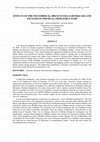
A devastating earthquake and the resulting tsunami hit coastal areas of Indian Ocean on December ... more A devastating earthquake and the resulting tsunami hit coastal areas of Indian Ocean on December 26, 2004. A team of Canadian engineers conducted a reconnaissance in Thailand and Indonesia. Their findings are presented in the paper in terms of performance of buildings, bridges, coastal structures and other physical infrastructure. It was observed that non-engineered reinforced concrete structures, low-rise timber frames and unreinforced masonry buildings suffered extensive damage due to hydrodynamic pressures generated by tsunami and impact forces induced by floating debris. Banda Aceh, Indonesia suffered extensive damage due to seismic excitations. A large number of non-engineered and engineered reinforced concrete frame buildings experienced partial or total collapse. A number of 3 to 5 story engineered reinforced concrete government buildings and shopping centers were damaged due to lack of proper seismic design practices. The engineering significance of disaster is presented in the paper with observations made during the reconnaissance visit.
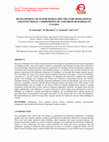
Previous earthquakes have clearly demonstrated that the damage to operational and functional comp... more Previous earthquakes have clearly demonstrated that the damage to operational and functional components of buildings usually cause more injuries, fatalities, and property and financial loss than those inflicted by structural damage. Operational and functional components of a building include architectural components, mechanical and electrical equipment, and building contents. An important step towards ensuring the safe design of operational and functional components of buildings is to develop floor design response spectra. This constitutes the scope of the current research program described in this paper. A total of 6 buildings, consisting of 5, 10 and 15-story frame buildings were designed and analyzed to establish floor response spectra. The buildings were designed for Ottawa and Vancouver representing Eastern and Western Canadian seismicity. Fifteen artificially generated earthquake records (accelerograms) were used for each structure, compatible with the Uniform Hazard Response Spectra specified in the 2005 edition of the National Building Code of Canada. It was observed that the response amplifications relative to ground excitations varied from floor to floor, and were frequency dependent. Generally, the higher floors showed higher amplification with differences in spectra between the floors being more pronounced in low-rise buildings, as compared to medium and high-rise buildings. The acceleration floor response spectra for individual floors are presented in the paper with details of the analyses that led to their developments. Recommendations are made for design floor response spectra for reinforced concrete frame buildings in Canada.
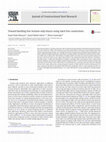
Journal of Constructional Steel Research, 2015
This study introduces a slack free connection (SFC) by which pinching would be removed from hyste... more This study introduces a slack free connection (SFC) by which pinching would be removed from hysteretic behavior of tension-only braces (TOBs). SFC through its mono-directional behavior, eliminates undesirable pinching of the tension-only bracing and changes it to a reliable lateral load resisting system with high energy dissipation capability. A Matlab/Simulink-based model, called Macro-Simulink model, is developed to simulate hysteretic behavior of TOBs with or without SFC. Derived Macro-Simulink model is also able to account for hysteretic behavior of the frame. The frame itself can have either deteriorated or non-deteriorated hysteretic behaviors. The Macro-Simulink model is verified through different techniques including earlier experimental results, explicit finite element modeling, and other pre-verified analytical/numerical tools. It is observed that initial pre-tension load only affects initial stiffness of the TOB and has no contribution on its nonlinear hysteretic behavior. Obtained results of this study indicate that energy dissipation capacity of TOBs with SFC would be improved up to 6 times compared with that of conventional TOBs. Moreover contribution of SFC is more pronounced in the case of frames with highly deteriorated behaviors. As a result TOB with SFC can be considered for retrofit purposes as well.

Reinforced concrete bridge columns subjected to strong earthquakes indicate that they may suffer ... more Reinforced concrete bridge columns subjected to strong earthquakes indicate that they may suffer from various types and levels of damage. One of the most common causes of seismic damage in shear-dominant columns is diagonal tension cracking, which may or may not result in irreparable damage. A rapid seismic repair technique was developed through experimental research, involving external post-tensioning damaged columns in the transverse direction. The technique was developed as an extension of a similar technique that had been developed for column retrofitting, known as the "RetroBelt" technology. The repair method involves the placement of seven-wire strands around circular, square or rectangular columns and applying prestressing by means of a hand held hydraulic jack and specially developed anchors. The prestressing tends to close shear-induced diagonal cracks, improving aggregate interlock mechanism, while also providing additional shear reinforcement. The technique was ...











Uploads
Papers by Murat Saatcioglu